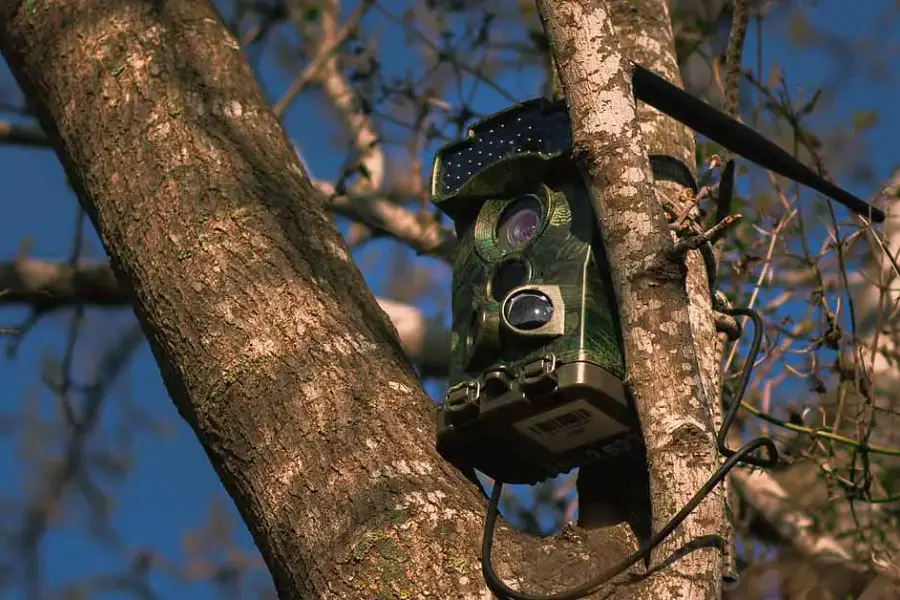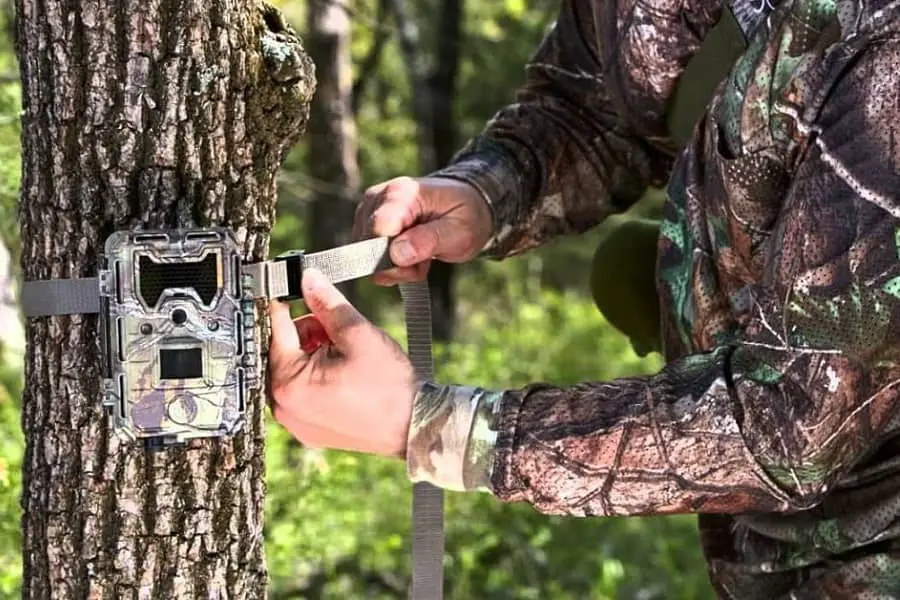Cameras have come a long way and can now be used effectively to monitor wildlife movements on hunting trails – making the hunters job much easier.
Read this post for information about different wireless trail camera types, their key features, pros and cons of Bluetooth, WiFi and Cellular trail cams, and where you can use them.
From Field Camera to wireless trail cameras – a Brief History

Nineteenth-century photographer and keen huntsman George Shiras can be credited with the first-ever trail camera. This was an oversized tripwire-triggered field camera that took hours to set up.
However, single-shot trail cameras using film and a tripwire only became a practical option in the 1980s. Over time IR beams replaced tripwires, multi-shot film cameras became more common, and digital sensors replaced film. Finally, today’s purpose-built units are used more often than wireless/cellular models.
Standard cameras require the user to retrieve an SD card from the camera itself, whereas wireless trail cameras allow the user to download images by connecting to the camera’s Bluetooth signal or via a WiFi (Wide), Local Area Network ([W]LAN), or mobile communications network.
Wireless Trail Camera Key Features
Regardless of whether you opt for a Bluetooth, WiFi, cellular, or MESH network setup, these are some key features to consider:
Passive Infra-Red (PIR) Motion Sensor
Active IR is used primarily on cameras used for specialized scientific uses. Such as cameras used to monitor and track certain endangered species.
Lens and Sensor Configuration
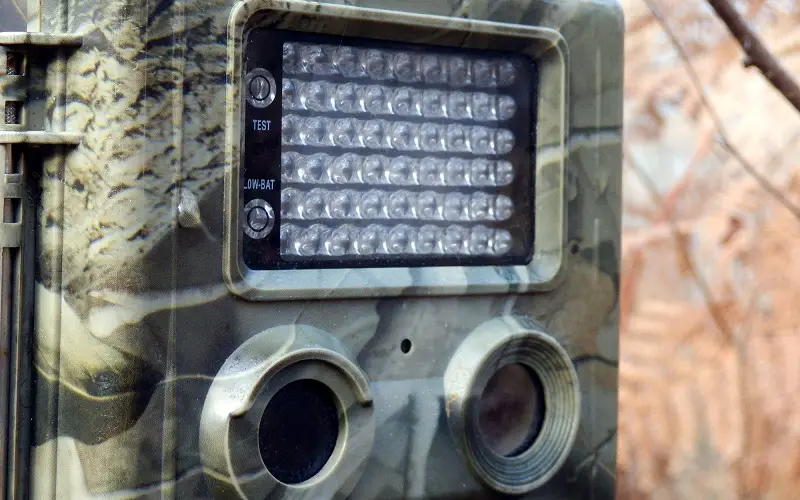
Field of view (FOV – generally wider is better), trigger speed, detection angle, and detection distance are other important considerations to bear in mind when choosing a trail camera. These elements work together.
A wide-angle lens will give a wide FOV, a telephoto lens a more narrow FOV. Some cameras are available with interchangeable or zoom lenses.
Trigger Speed
A faster trigger speed is needed for cameras set up by a trail, while a camera set up to monitor a bait site or feeder won’t need to be as fast.
Linked features are programmable options such as trigger delay, burst mode, and others you may want to consider, depending on how you plan to use the camera.
Recovery Time
Cameras with slow write times will be out of action longer after taking a still image or video. Write times will be longer for video on any camera. However, recovery times for stills and video are negligible for a top-spec camera, whereas lower-spec cameras will need more time to process images between shots.
Water and Dust Resistance
Any trail camera you buy should be water and dustproof to IP56 standard at a minimum. You can also find models rated at the incrementally higher IP66 and IP67 standards which are recommended.
Wireless Trail Camera Types
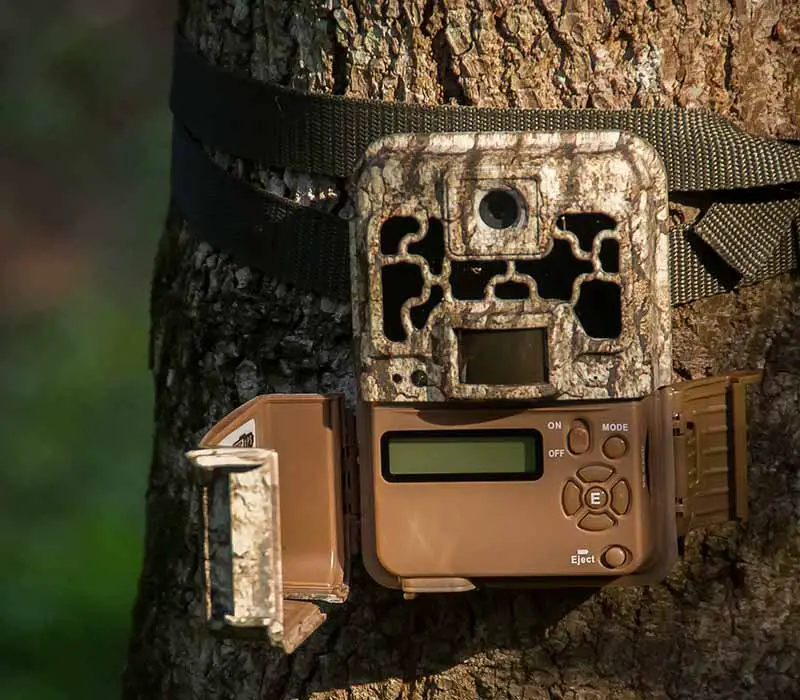
Let’s take a look at the different types of wireless trail cameras available.
Bluetooth
A Bluetooth wireless camera works via a direct camera-to-phone wireless connection. The range is affected by terrain and other lines of sight obstacles such as trees.
Pros
- No cellular data charges
- Simple to set up and sync with your phone
- Long battery life
Cons
- Slower data transmission than WiFi or Cellular
- Limited range (100 ft or less)
Try Hellidallr 30MP 4K Bluetooth trail camera with a 120° Field of View (FoV), IP66 waterproofing, and 0.1s trigger speed if you’re looking for a reliable Bluetooth trail camera.
WiFi
WiFi trail cameras operate via a WLAN or LAN to which you connect your phone to access images stored on the camera/cameras. As with Bluetooth, any obstacle between the phone and the camera will limit the operational range. On open ground, a 2.4ghz WiFi signal will operate out to around 300ft, and a 5Ghz signal to around 100ft.
WiFi-only trail cameras will only operate close enough to a property or other base hosting the LAN/WLAN. Some cameras have a built-in WiFi hotspot you can connect your phone to directly, but typically these have a limited range of around 30ft.
Pros
- Fast transmission speeds
- Simple set up and sync
- No data charges
Cons
- Limited range.
- Higher power consumption than Bluetooth
- WiFi LAN base needed
Try Doon 32MP WiFi Trail Camera, 0.2s trigger, 120° FoV, IP66 Waterproof if you’re looking for a good Wi-Fi trail camera.
Mesh Networks
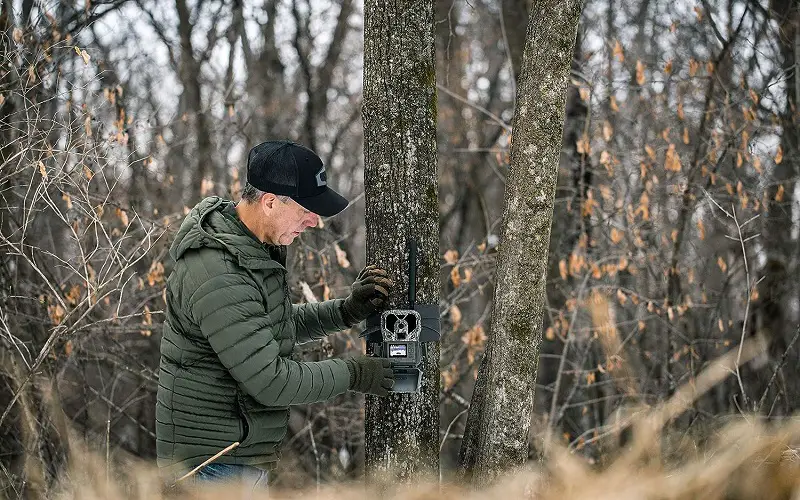
Depending on the manufacturer/model, a mesh network can include three or four and up to a couple of dozen cameras, which can be daisy-chained to send images back to a home camera from which you can retrieve the images.
Networked cameras of this sort can send data to each other on an RF band up to a mile over open ground or around ¼ of a mile where there are obstructions. Images can be retrieved directly from the home camera’s SD card or via a wireless adaptor.
Pros
- Good option in areas with poor cellular coverage
- Efficient way to cover a wide area of land
- High initial layout can be offset via zero data changes over time
Cons
- Terrain and other obstacles limit the effective range
- Slower data transmission than the other options
- High initial cost
- Long-distance access needs wireless adaptor, potentially adding data charges
- Setup can be complicated
Try Cuddelink essentials small MESH network setup if you’re looking for a dependable Mesh Network trail camera.
Cellular Trail Cameras
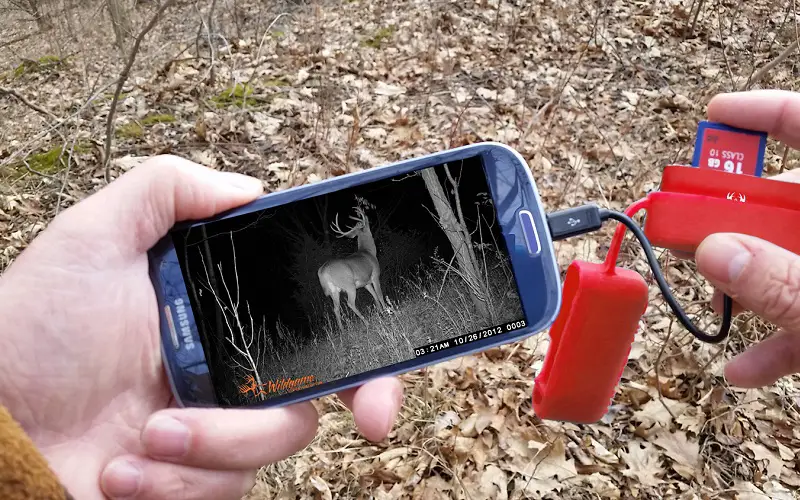
Cellular trail cams are the most popular type today, outselling all other trail cameras by a wide margin. The reason is simple – you can connect a trail cam with cellular to a mobile network, meaning you can access those images from anywhere you have a network connection, which these days is almost anywhere.
Pros
- No range limits (with a good enough network connection)
- Fast data transmission
- Wide range of accessories available
- Cameras can be accessed and operated remotely using your phone or tablet
Cons
- Adds the cost of a data plan
- Inoperable where there is no network coverage
Try Tactacam Reveal XB Cellular Trail Camera + Solar Charging Panel if you’re searching for a good cellular trail camera.
Where Can You Use Wireless Trail Cameras?
Trail cameras can be used for hunting and conservation alike. Nevada and Arizona maintain a complete ban on any trail camera for hunting, including on private land. Montana, Utah, Kansas, New Hampshire, and Alaska implement a wireless trail camera ban during the season.
The reason for this is that many states believe the use of trail cameras gives the hunter an unfair advantage and leads to a fair chase issue.
In other states, Ohio, for example, the choice is left to individual hunters. In these states, wireless trail cameras can be used throughout the year in public wilderness and forest areas. Before setting up your wireless trail camera, it’s best to make sure it’s allowed in your state.
Conclusion
Trail cameras are now more efficient than ever, and even if you’re not a tech-head it’s easy to set up several cameras in your hunting areas using WiFi or Bluetooth and pairing the network directly to your phone.
As the technology becomes more widely available, it also becomes cheaper, so you don’t have to break the bank to install them and you can easily find resistant gear that offers HD streams.
However, depending on your state of residence, you might want to check if the use of cameras is authorized during hunting season, or if it requires any permissions.
References:


